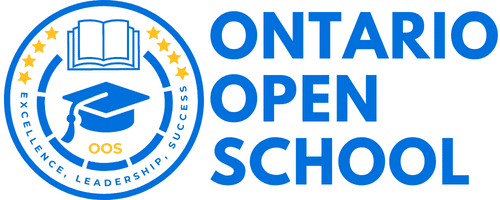- info@ontarioopenschool.com
- 647-494-4499
-
Unit 100 - 29 Gervais Drive, North York, ON.
M3C 1Y9
Copyright 2024 Ontario Open School Inc. All Rights Reserved.
This course examines current Canadian and international economic issues, developments, policies, and practices from diverse perspectives. Students will explore the decisions that individuals and institutions, including governments, make in response to economic issues such as globalization, trade agreements, economic inequalities, regulation, and public spending. Students will apply the concepts of economic thinking and the economic inquiry process, as well as economic models and theories, to investigate, and develop informed opinions about, economic trade-offs, growth, and sustainability and related economic issues.
Unit Order | Unit Name | Suggested Time |
|---|---|---|
| Unit 1 | Foundation/Fundamental of Economics In this unit students will explore basic economic concepts such as production possibilities curves, scarcity, choice, and opportunity cost. The second half of the unit deals with different types of economies, including traditional, command, market and mixed, and also looks at key figures in economics like Adam Smith and Karl Marx. | 27 hours |
| Unit 2 | FIRMS, MARKETS, AND ECONOMIC STAKEHOLDERS The student will learn about all important aspects and determinants of market demand, market supply, and market price. The laws of demand and supply are covered, as is the concept of price elasticity. Students close out the unit with an analysis of the market for labour, learning about demand and supply shifts, wages and other labour market issues. | 30 hours |
| Unit 3 | MACROECONOMICS The first unit of this course begins by having students explore basic economic concepts such as production possibilities curves, scarcity, choice, and opportunity cost. The second half of the unit deals with different types of economies, including traditional, command, market and mixed, and also looks at key figures in economics like Adam Smith and Karl Marx. | 27 hours |
| Unit 4 | GLOBAL INTERDEPENDENCE AND INEQUALITIES In the last unit of the course, students learn about Canada as a trading nation, and the benefits and strains of international trade. Principles of International Trade Theory are explored, as are trade barriers and international trade policies. Balance of payments issues, the value of the Canadian dollar, and fluctuating exchange rates are examined in the second section of the unit, with students learning how to read foreign exchange rate tables. Lastly, economic growth is covered in the final section. The significance, measurement, and sources of economic growth are looked at in detail, and students also learn about topics such as promoting capital investment and technological progress. | 18 hours |
| Final Evaluation 30% | Final Project Final Exam | 6 hours 2 hours |
| Total | 110 Hours |
A wide variety of instructional strategies are used to provide learning opportunities to accommodate a variety of learning styles, interests and ability levels. These strategies include, but are not limited to:
| Strategies marked with “X” are used in the course. | |||
| Direct Instruction (teacher-led) | X | Class Activity (teacher facilitation) | X |
| Direct Instruction (discussion possible) | Experiential learning (learn by doing) | ||
| Class Discussion (teacher facilitated) | X | Worksheets/Surveys | X |
| Small Group Discussion | Individual or Group Research | X | |
| Partner Discussion/Conferencing | Teacher modeling | ||
| 1:1 Conferencing Teacher & Student | Text-based modeling | ||
| Teacher reading to class | Use of Computers / Internet | X | |
| Silent individual reading | X | Use of video tape or audio materials | X |
| Group based reading | X | Role Playing | |
| Independent Work (teacher facilitation) | X | Presentations | X |
| Group Work (teacher facilitation) | Guest Speaker / Interviews / Questions | ||
| Brainstorming | X | Field Trip | |
Purpose
The primary purpose of assessment is to improve student learning. Assessment relates directly to the expectations for the course.
A variety of assessments for and as learning are conducted on a regular basis to allow ample opportunities for students to improve and ultimately demonstrate their full range of learning and for the teacher to gather information to provide feedback. Assessment tasks relate to the success criteria set out in lesson plans. Success criteria allow students to see what quality looks like.
Evaluation is the process of judging the quality of student work in relation to the achievement chart categories and criteria and assigning a percentage grade to represent that quality. Evaluation is based on gathering evidence of student achievement through:
Assessment for Learning – we provide feedback and coaching. Assessment FOR Learning is the process of seeking and interpreting evidence for the use of learners and their teachers to decide where the learners are in their learning, where they need to go, and how best to go there.
Assessment as Learning – we help students monitor progress, set goals, reflect on their learning
Assessment AS Learning is the process of the explicit fostering of students’ capacity over time to be their own best assessors, but teachers need to start by presenting and modeling external, structured opportunities for students to assess themselves.
Assessment of Learning – we use assessments to provide evaluative statements about student achievement. Assessment OF Learning is the assessment that becomes public and results in statements of symbols
(marks/grades/levels of achievement) about how well students are learning. It often contributes to pivotal decisions that will affect students’ future.
ASSESSMENT TOOLS
| Assessment tools marked with “x” are used in the course. | |||
| Marking schemes | X | Rubrics | X |
| Anecdotal comments | Checklists | ||
| Rating Scales | |||
Assessment Strategies
| Assessment for Learning | Assessment as Learning | Assessment of Learning | |||
| Quizzes | X | Journal/Reflections | Tests | X | |
| Tests | Exit and Entrance Cards | X | Presentations | ||
| Presentations | Graphic Organizer | X | Journals | ||
| Journals | X | Self/Peer assessment | X | Essays | |
| Essays | Models | ||||
| Models | Projects | X | |||
| Projects | Demonstrations | ||||
| Demonstrations | X | Conferencing | |||
| Conferencing | Questioning | ||||
| Questioning | Independent Study Assignment | X | |||
| Independent Study Assignment | X | Art Exhibits | |||
| Art Exhibits | Researching | ||||
| Researching | Reading Aloud | ||||
| Reading Aloud | Problem Solving (process focused) | ||||
| Problem Solving (process focused) | Debates | ||||
| Debates | Work Sheets | X | |||
| Work Sheets | X | Role Playing | |||
| Role Playing | Direct Instruction | ||||
| Direct Instruction | |||||
Resources
Grading
Weighting of categories
| Knowledge/Understanding | Thinking/Inquiry | Communication | Application |
| 25% | 25% | 25% | 25% |

Course Grade | Grade 12 |
|---|---|
Course Code | CIA4U |
Course Category | Canadian and World Studies |
Course Type | University Preparation |
Course Delivery | Online |
Course Duration | 8hrs |
Course Credit | 0 |
Copyright 2024 Ontario Open School Inc. All Rights Reserved.
